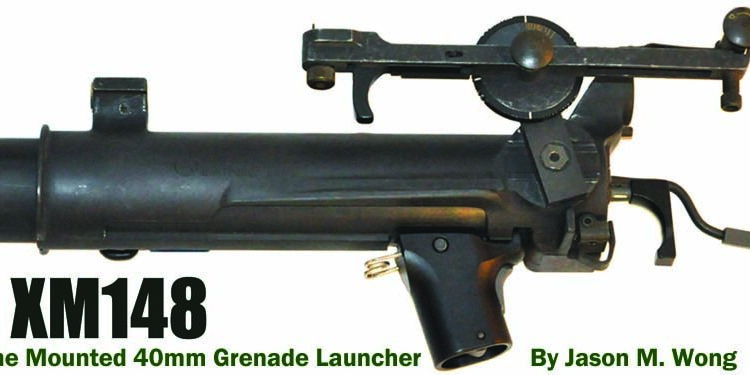By Jason Wong
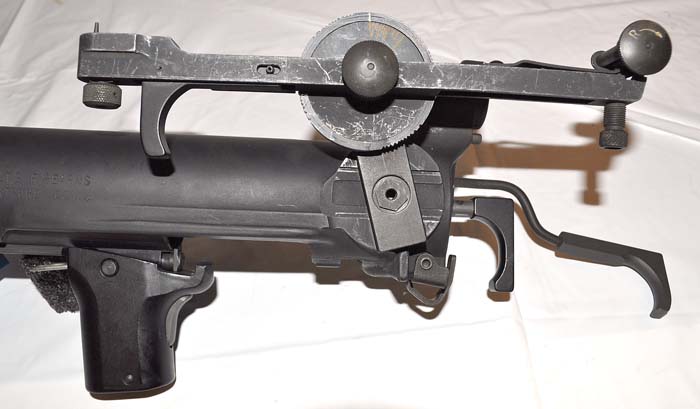
The XM148 was a revolutionary weapon that allowed infantry soldiers to engage the enemy beyond the range of hand grenades without the weight and complexity of light mortars. Rifle grenades were employed as early as World War I and efforts to launch rifle grenades from the semiautomatic M1 Garand succeeded in 1943 with the introduction of the M7 system. Used with a specially manufactured blank cartridge, the semiautomatic feature of the rifle was temporarily disabled to allow all of the energy of the blank cartridge to be transferred into launching the rifle grenade. Although the M7 rifle grenade system proved to be combat effective, the system was time consuming and potentially life threatening, given that the semiautomatic feature of the M1 Garand was disabled to fire the rifle grenade. A simpler system was needed that resulted in the development of the M79 grenade launcher: a system dedicated solely to the firing of 40mm low-pressure grenades.
Prior to the XM148, a U.S. Army grenadier was issued an M79 grenade launcher as a primary weapon, and an M1911 pistol as a secondary weapon. While the M79 allowed for a dedicated grenadier within the infantry squad, each M79 grenadier necessarily removed a rifleman from the unit due to the weight constraints of carrying both an M16 and an M79. Following in the footsteps of the M79 grenade launching system, the XM148 was a complex and fragile weapon system when compared to the robust M79. Nevertheless, the XM148 effectively allowed the infantry soldier to retain the primary battle rifle in combat readiness while also permitting the use of the newly developed 40mm low-pressure grenade system.
Following adoption of the M79 it became evident that the 40mm grenade system was an effective intermediate weapon that should be pursued and developed for use on the battlefield. Nevertheless, grenadiers were forced to make sacrifices in exchange for the ability to launch grenades at targets 350 meters away. The fuse within the 40x46mm grenade required 30 meters to arm, thus firing a 40mm grenade at a target closer than 30 meters was ineffective. Armed with an M1911 pistol as a secondary weapon, grenadiers in Vietnam were also provided the M576 40mm buckshot round and experimental flechette rounds of dubious effectiveness. A better solution was needed.
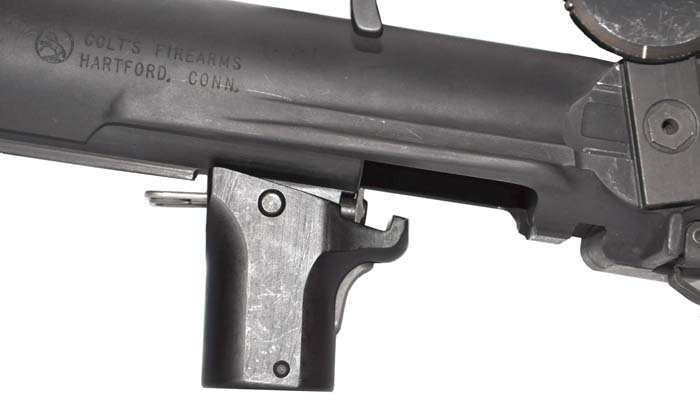
In 1963, the Army Operations Research Office requested the adaptation of a grenade launcher to the existing M16 rifle. The Colt CGL-4 (which would later be type-classified as the XM148) was first displayed publically in May 1964, with an initial distribution of 1,764 weapons being delivered to all U.S. Army brigades deployed to Vietnam in mid-January, 1967. The XM148 was delivered to each maneuver battalion within Vietnam on the basis of two weapons per rifle squad. All other grenade launchers were also traded on a one-to-one basis, resulting in approximately 84 XM148 units being employed per battalion.
What can only be described as remarkably pro-active, in November 1966 (and prior to issuing the weapons to combat units) the Office of the Assistant Chief of Staff for Force Development, U.S. Army, informally requested the assistance of command elements from U.S. Army, Vietnam (USARV) in collecting information about the performance of the XM148 in combat conditions. On December 25, 1966, USARV requested that an evaluation of the XM148 as employed with the 199th Light Infantry Brigade Operating (operating within the Rung Sat Special Zone within Vietnam) be conducted.
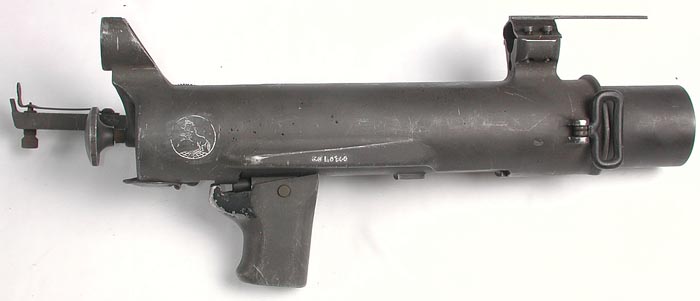
Data collection began on April 11, 1967, with five critical inquiries:
- The effect the weapon had upon small unit tactics;
- The performance of the weapon as intended under combat conditions;
- A determination of failure and maintenance issues, with an emphasis on failure rates for specific parts;
- A determination of whether the XM148 was desired by infantrymen as a replacement for the M79 grenade launcher; and
- If adopted, a determination of what basic load would be appropriate for individual soldiers assigned to combat support and combat service support units.
The survey ultimately grew to include 12 units from seven brigades, in four separate divisions. From an analytical view, the units interviewed and their area of operations bears some import due to the varying terrain and fighting conditions encountered by each unit. The 12 units involved included:
- 1st Infantry Division, located in Di An;
- 4th Infantry Division, located in Pleiku;
- 9th Infantry Division, located at Camp Bearcat;
- 25th Infantry Division, located at Cu Chi;
- 3rd Brigade, 25th Infantry Division, located at Pleiku;
- 1st Brigade, 101st Airborne Division, located at Kontum;
- 173rd Airborne Brigade, located at Bien Hoa;
- 196th Light Infantry Brigade, located at Tay Ninh;
- 199th Light Infantry Brigade, located at Long Binh;
- 3rd Brigade, 4th Infantry Division, located in Dau Tieng;
- 11th Armored Cavalry Regiment, located at Long Giao; and
- 1st Air Cavalry Division, located in Binh Dinh.
Questionnaires received from the 1st Air Cavalry Division were received too late to be used within the official U.S. Army report, however interviews and data collected from the 1st Air Cavalry Division were used to validate and support the findings of the report.
The report found that M79 grenadiers used the weapons for an average of 8.9 weeks at the time of the survey, with some units using the weapon for only 3 weeks, while other units had used the weapons for nearly 16 weeks. Regardless, the amount of time the XM148 had been in active use and service at the time of the survey was extremely short.
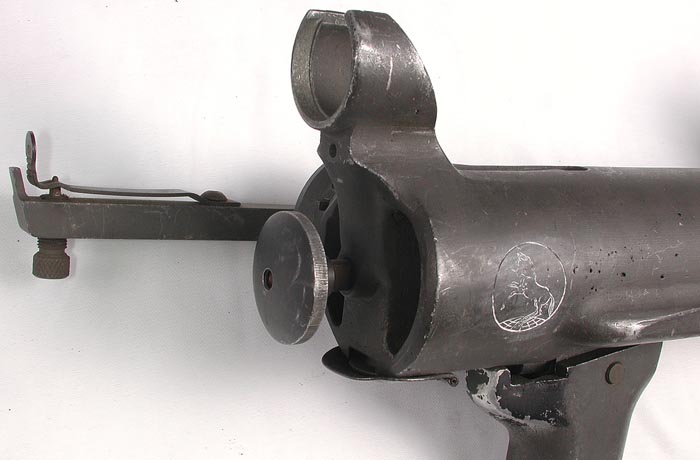
The survey found that M79 grenadiers welcomed the combined rifle and grenade launcher concept, and lauded the XM148 in its ability to provide the dual capability of point and area fire within the same weapons system. Nevertheless, former M79 grenadiers found the system to be difficult to use with four central themes:
- A decreased rate and quantity of fire;
- Slower grenadier reaction time to firing at the target;
- Hampered movement of the grenadier in dense vegetation; and
- A need to devote an extraordinary care in keeping the weapon clean and functional.
In terms of small unit tactics, most respondents reported that employment of the XM148 did not change small unit tactics.
In recognition of the different types of terrains and situations encountered by the respective group, the targets most frequently engaged were concealed (or suspected) enemy positions and enemy combatants in the open. Nevertheless, respondents also reported engaging bunkers, sampans, foxholes, and huts. Sixty-seven percent of respondents reported the range at which most targets were engaged was 50 to 150 meters, with 11% reporting engagements under 50 meters, 20% reporting engagements between 150-300 meters, and 1% of respondents reporting engagements over 300 meters. (Due to rounding, the percentages do not total 100%) The majority of respondents (53%) reported that the rate of fire was unsatisfactory.
In terms of maintenance issues, users complained about a number of issues and perceived deficiencies within the system. Soldiers reported that removing the unit for routine maintenance was difficult and the small Allen screws and locking pins used to secure the XM148 to the M16E1 were easily lost. In addition, the small parts of the systems were hard to clean, screws would rust easily, and the pistol grip was easily broken.

Out in the field, the quadrant sight was prone to snagging in brush, and worse, the sight was difficult to use with any accuracy. Also listed as snag prone were the extended cocking and trigger bars. Users found that under combat conditions, these two external bars could be bent or broken when field stripping the M16E1. The cocking lever was unpopular due to the 30 pound (14kg) force required to cock the weapon.
There are two design factors that appear to be critical contributors to the failure of the XM148. The first design element is the exposed sear lever and fire control parts at the rear of the receiver. During the 1967 investigation, soldiers reported that the trigger could bind the sear lever, and prevent the weapon from being cocked. In addition, the trigger could be immobilized by objects caught, or inserted between the receiver of the M16E1 and the trigger of the XM148. While this may seem like a foreign concept, recall that the trigger of the XM148 is an external bar measuring several inches in length, running along the right side of the weapon system. Apparently, it was not uncommon for a weapon sling, twigs, or fingers from slipping between the receiver of the XM148 and the receiver of the M16 rifle, thereby preventing the weapon from functioning. The exposed sear lever had the unique distinction of being both unsafe, yet favored by soldiers. If the weapon is cocked and pressure is applied to the sear lever by an external force, the weapon will fire. It was reported that soldiers would fire the XM148 by using their left thumb to depress the sear lever rather than use the weapon’s trigger bar.
The second contributing design flaw appears in the construction of the barrel and receiver interface. Unlike the M203, the receiver of the XM148 is a tube. The barrel fits inside the receiver, and pushes forward to expose the breech of the weapon. To operate the XM148, the rear of the pistol grip is pushed forward, which unlocks the barrel from the receiver. The barrel then slides forward within the receiver to allow the loading and unloading of the weapon. Recall that soldiers complained that the pistol grip was prone to breakage. In the event that the pistol grip failed, it would be difficult for soldiers to load and unload the weapon. In addition, due to the large contact area between the receiver and the barrel, dirt, mud, and other sludge caught between the receiver and barrel would make the weapon system difficult to operate. Within a few months, units with the XM148 were clamoring to have their M79 reissued.
In July 1967, the Army launched the Grenade Launcher Attachment Development (GLAD) program with the intent to solicit interest in the development of an alternative grenade launcher to the XM148. Recall that the XM148 was initially issued just 6 months prior, in January 1967. For the Army to launch a new program and solicit new designs for an existing weapon system within 6 months is nothing short of remarkable. Seven companies expressed interest in the GLAD program, of which three companies were awarded contracts. The three companies – Philco-Ford, Aero Jet General, and AAI each proposed a radically different solution to the 40mm grenade launcher. Aero Jet submitted an SPIW-type semiautomatic grenade launcher. Nothing similar to the original Aero Jet design has since surfaced or been developed for use. Similar to the modern Heckler and Koch M320 system, Philco-Ford offered a design that featured a barrel that swung open to either side of the receiver. AAI offered a single shot weapon with a simple single shot, single action trigger, pump action design.
Surprisingly, Colt was absent from the competition. By July 1967, Colt had already delivered 27,400 XM148 units to the U.S. Department of Defense. In an attempt to retain the contract, Colt attempted to redesign the XM148 at no cost to the U.S. Government, but the offer was rejected. Nevertheless, Colt’s redesigned XM148 was deemed the CGL-5. (Recall that the original name for the XM148 was the CGL-4.) Drawings of the CGL-5 grenade launcher proposed by Colt can be seen in U.S. Patent 3507067. The CGL-5 grenade launcher appears to be a reworked XM148, with similar features, including the tubular receiver and use of the pistol grip as a means to lock and unlock the breach. In terms of design attributes, the CGL-5 would likely have suffered from the same malfunctions and failures as the XM148 as there appears to have been no attempt to rework the tubular receiver, nor the exposed trigger mechanism. In defense of the CGL-5, the trigger and cocking bar were replaced by a simple knob at the rear of the receiver.
In August 1968, the prototype submitted by AAI was selected and type-classified as the XM203. Authorization to build 600 XM203s was granted in December 1968, with initial units assembled and sent to Vietnam for fielding and additional testing. AAI built the first 600 XM203 weapon systems, only to have all future production contracts for the M203 be awarded to Colt.
The XM148 project was dead, and was being replaced by what would become the M203 weapon system. Nevertheless, the concept of the secondary weapon mounted to the infantry soldier’s primary battle rifle survived, with the XM148 serving as the model for present day 40mm low-pressure grenade systems. As a weapon system, it can be argued that the XM148 was a failure. In terms of demonstrating a viable concept, the XM148 proved that a grenade launcher and battle rifle could be an effective weapon system – a concept that continues today as demonstrated by the use of mounted 40mm grenade weapon systems by nearly every modern Army.
| This article first appeared in Small Arms Review V13N6 (March 2010) |



